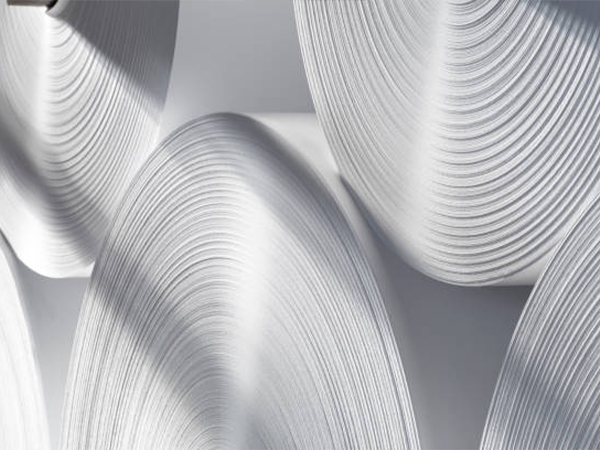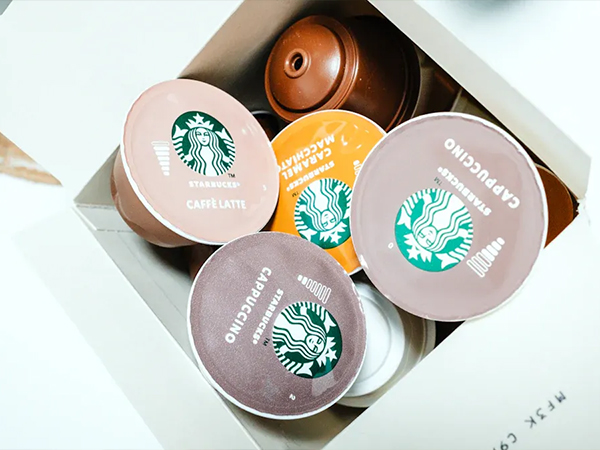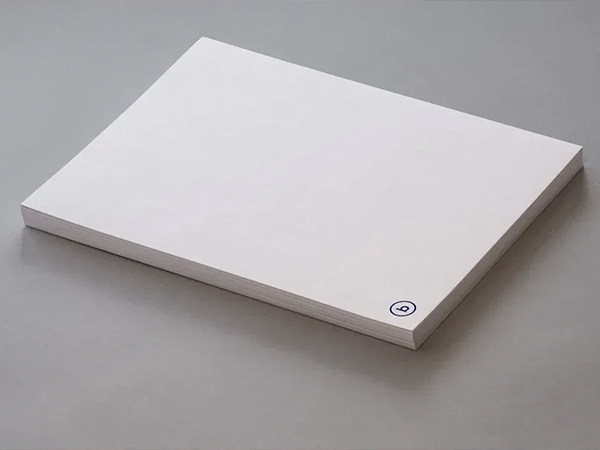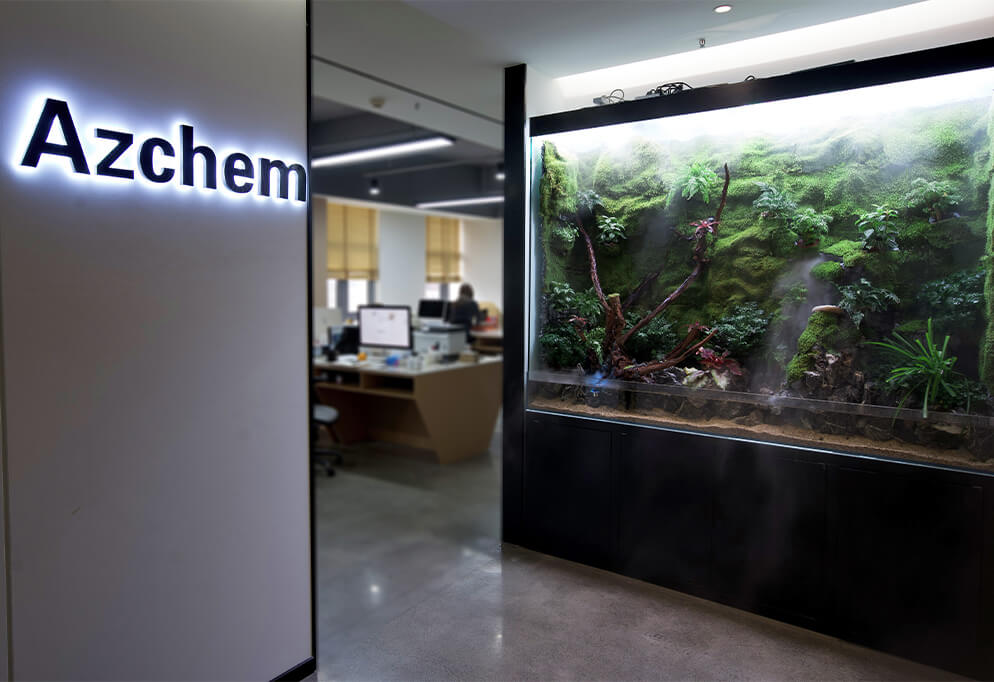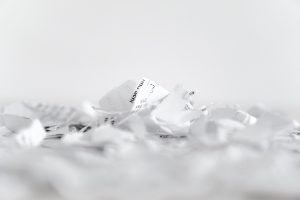
You can achieve remarkable improvements in paper performance by using akd wax with the right approach. Proper emulsification and application play a crucial role.
- Water resistance increases dramatically, with studies showing about a 91% reduction in water vapor transmission rate after treatment.
- Tensile strength also rises, with values jumping by 55% compared to untreated paper.
Many papermakers face challenges like retention and curing issues, as well as interactions with fillers. Industry research highlights that AKD forms hydrophobic bonds with cellulose, which is essential for lasting sizing effects.
Key Takeaways
- Choose the right AKD wax type and grade to match your paper’s needs for better water resistance and strength.
- Use proper emulsification equipment and control temperature to create stable AKD wax emulsions.
- Apply AKD wax by internal or surface sizing, and always follow correct dosing and mixing steps for even distribution.
- Control pH and temperature during preparation and curing to maximize AKD wax performance and durability.
- Select suitable retention aids like cationic starch or PAC to improve AKD wax fixation on fibers.
- Regularly test paper water resistance and strength using standard methods to guide process adjustments.
- Avoid common mistakes such as wrong pH, poor mixing, or overdosing to maintain high paper quality.
- Explore advanced additives and sustainable practices to enhance paper properties and meet environmental goals.
AKD Wax Selection
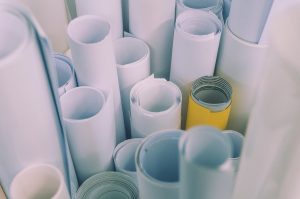
Types and Grades
Selecting the right type and grade of AKD wax is essential for achieving the desired paper properties. You will find two main types used in papermaking: cationic (AKD-I) and anionic (AKD-II) emulsions. Each type has unique characteristics that affect sizing efficiency and compatibility with additives. The table below highlights their key differences:
| Property | AKD-I (Cationic) | AKD-II (Anionic) |
|---|---|---|
|
Solids content (%) |
~20 |
~20 |
|
Viscosity (cPs) |
~6.6 |
~7.2 |
|
Average particle size (μm) |
0.41 |
0.39 |
|
ζ-potential (mV) |
+9.8 |
–11.9 |
|
Stabilizer |
Starch |
Starch |
|
Surfactant |
Polymer-based |
Sodium lignin sulfonate |
Industrial grades of AKD wax, such as 1840, 1865, and 1895, differ in purity and alkyl chain length. Grades with higher purity (at least 93%) and longer chains (C>12) provide better water resistance and durability. The melting point also matters. A higher melting point can cause rapid crystallization, leading to unstable emulsions. A lower melting point may result in incomplete melting and larger emulsion particles. You should always check the melting point to ensure optimal emulsification and application.
Tip: For food wrappers and cultural paper, choose high-purity AKD wax grades to maximize water resistance and paper strength.
Application Methods
You can apply AKD wax using internal sizing or surface sizing. Internal sizing involves adding emulsified AKD directly to the pulp. This method improves water resistance and wet strength without reducing dry strength. Surface sizing, on the other hand, coats the paper after sheet formation. When you use AKD-modified coatings and apply thermal curing, you enhance hydrophobicity and mechanical strength. Both methods allow you to control the barrier properties and printability of the final product.
Thermal curing at around 110°C is critical for surface sizing. This step completes the chemical reaction between AKD and cellulose, forming strong hydrophobic bonds. For internal sizing, focus on achieving even dispersion and stable emulsions to ensure consistent results.
Key Factors
When choosing an AKD wax and application method, consider the following:
- Paper type:
- Food wrappers and cultural papers benefit from neutral sizing, which improves strength, whiteness, and durability.
- Wrapping and specialty papers require grades compatible with alkaline fillers like calcium carbonate.
- Sizing method:
- Internal sizing works well for most paper types and provides durable water resistance.
- Surface sizing is ideal for enhancing barrier properties and printability.
- Compatibility:
- AKD wax performs best in neutral to alkaline conditions (pH 7.5–8.5).
- It works well with mineral fillers and retention aids, but you should monitor for interactions that may affect retention or sizing efficiency.
- Cost-effectiveness:
- AKD wax offers superior hydrophobicity and operational robustness, making it a cost-effective choice for both small and large mills.
Note: Always match the AKD wax type and grade to your specific papermaking process and end-use requirements for optimal results.
Preparation
Equipment
You need the right equipment to prepare and emulsify AKD wax for papermaking. Industrial setups often use a series of specialized machines to ensure efficiency and product quality. Here is a typical equipment lineup:
- Reactor with jacket heating system: This melts solid AKD wax powder into a liquid.
- Emulsifying kettle with high-speed shear (1000-3000 rpm): This mixes molten wax and emulsifier to create a coarse emulsion.
- High-pressure homogenizer (20-50 MPa): This refines the emulsion, reducing particle size for uniformity.
- Filter tank: This removes any unemulsified wax and impurities.
- Plate heat exchanger: This cools the emulsion quickly from 60°C to below 30°C, preventing hydrolysis.
- Aluminum sulfate preparation kettle: This prepares the cationic emulsifier solution, which stabilizes the emulsion.
- Finished product kettle: This mixes, adjusts pH, and stores the emulsion under nitrogen protection.
Tip: Use equipment with integrated heating and cooling elements for precise temperature management during the entire process.
Emulsification
You achieve a stable AKD wax emulsion by carefully controlling temperature and mixing speed. Start by heating the aqueous phase to at least the wax melting point, usually between 60°C and 70°C. This step keeps the wax liquid and ready for mixing. Use a high-shear mixer or emulsifier, operating at speeds up to 10,000 rpm for several minutes, to break the wax into fine particles. Then, pass the mixture through a high-pressure homogenizer to further reduce particle size, ideally to 0.1-1 microns. Fine particles help the emulsion remain stable and effective in papermaking.
Maintain the temperature during emulsification to prevent the wax from solidifying too soon. After emulsification, rapidly cool the emulsion using a plate heat exchanger or ice bath. This step locks in stability and prevents hydrolysis. Always use fresh emulsion for best results, as shelf life is limited.
Safety
You must follow safety guidelines when handling AKD wax and its emulsions. Store the emulsion in a cool place, ideally between 5°C and 30°C. Avoid freezing and keep the product away from sunlight and air exposure. The standard shelf life for AKD wax emulsions is up to three months. Some custom blends may last up to six months, but always check the manufacturer’s recommendations.
Note: Proper storage and handling not only protect your safety but also ensure the emulsion performs as expected in your papermaking process.
AKD Wax Application
Dosing
You must start with accurate dosing to achieve consistent sizing results. The recommended dosage of AKD wax typically ranges from 0.05% to 0.2% of the dry fiber weight for internal sizing. For surface sizing, you may use slightly higher concentrations, depending on the desired water resistance and paper type. Always measure the emulsion carefully using calibrated pumps or dosing systems. Overdosing can cause deposits and reduce paper quality, while underdosing leads to weak water resistance.
Tip: Begin with a lower dose and gradually increase it during trials. Monitor the paper’s water resistance and strength to find the optimal level.
Mixing
Proper mixing ensures that AKD wax disperses evenly throughout the pulp or coating solution. You should use moderate shear mixing, such as 5000 rpm for 30 seconds, when treating stabilized AKD emulsions with high-charge cationic starch. This process controls the electrical charge interactions and reduces the particle size of the emulsion. After high-shear mixing, switch to gentle stirring to maintain stability.
The mixing process directly affects the zeta potential of the emulsion. A higher zeta potential prevents flocculation, which leads to better dispersion and improved retention of AKD on the fibers. Adding polyaluminum chloride (PAC) after starch treatment further decreases particle size and viscosity, enhancing emulsion stability. Always avoid rapid starch dissolution, as it can cause lump formation and uneven distribution.
Note: Uniform mixing not only improves retention but also ensures that the AKD wax forms a stable, fine emulsion. This step is critical for both internal and surface sizing applications.
Addition
You must add AKD wax at the correct stage of the papermaking process to maximize its effectiveness. The method differs for internal and surface sizing.
Timing
For internal sizing, add the AKD emulsion directly into the pulp slurry before sheet formation. This step allows the wax to integrate into the fiber matrix, enhancing water resistance throughout the sheet. For surface sizing, apply the AKD solution onto the paper surface after sheet formation but before drying. Use equipment such as size presses, pond presses, or coating rods to achieve a uniform layer.
| Sizing Method | Addition Point | Equipment Used |
|---|---|---|
|
Internal |
Before sheet formation |
Pulp mixers, dosing pumps |
|
Surface |
After sheet formation, pre-drying |
Size press, film press, coating rod |
Tip: Always synchronize the addition of AKD wax with the flow of pulp or paper to prevent uneven distribution and chemical waste.
Dispersion
Even dispersion is essential for effective sizing. For internal sizing, ensure the AKD wax emulsion distributes uniformly within the fiber network. This approach improves water resistance and retention across the entire sheet. For surface sizing, focus on forming a continuous, thin film on the paper surface. The AKD molecules will redistribute and orient themselves during and after drying, creating a hydrophobic layer that enhances surface strength and printability.
Best practices for even distribution include:
- Emulsify AKD above its melting point (40–60°C) to form liquid droplets.
- Use stabilizers like guar gel to reduce droplet size and prevent coalescence.
- Ensure more than 90% of droplets are smaller than 1 μm for optimal sizing.
- Apply high-energy mixing methods, such as high-pressure homogenization, when using cationic starch or synthetic polymers.
Note: Guar gel acts as a particle stabilizer, forming a protective film around droplets and creating a 3D network that maintains emulsion stability during storage and transport.
You can choose between internal and surface sizing based on your paper’s end use. Internal sizing integrates AKD wax into the fiber matrix, improving bulk water resistance and retention. Surface sizing forms a thin film on the paper, enhancing surface-specific properties like printability and durability. The choice of method affects both the application process and the final paper characteristics.
Callout: Always monitor the viscosity, temperature, and drying rate during surface sizing. These factors influence the effectiveness of the AKD layer and the development of hydrophobicity over time.
Optimization
Temperature and pH
You can maximize the performance of AKD wax by carefully controlling both temperature and pH during the papermaking process. When you prepare AKD dispersions, aim for an acidic pH between 3.5 and 4.5. This range helps you form stable dispersions with fine particle sizes, usually below 1 µm. During the curing stage, set the temperature to around 120 °C for at least 10 minutes. This elevated temperature melts and spreads the AKD compounds across the cellulose fibers. As a result, you achieve stronger hydrophobic bonds and greater water repellency. Analytical techniques confirm that this combination of low pH and high temperature leads to better retention of AKD on the fibers, even after repeated exposure to water. By focusing on these parameters, you ensure that your paper gains both strength and long-lasting water resistance.
Tip: Always monitor the pH and temperature at each stage. Small changes can significantly affect the reactivity and durability of the sizing.
Retention Aids
Retention aids play a vital role in fixing AKD wax onto the paper fibers. You should select retention chemicals that work well with your chosen AKD emulsion and papermaking conditions. Common options include cationic starch, polyaluminum chloride (PAC), and synthetic polymers. These additives help you trap the AKD particles within the fiber matrix, reducing losses and improving efficiency. When you use the right retention aid, you also minimize the risk of AKD agglomeration, which can cause uneven sizing and deposits on equipment. Adjust the dosage and type of retention aid based on your pulp composition and process pH. This approach ensures that AKD wax remains evenly distributed and fully reacts with the cellulose.
Note: Test different retention aids in small batches before scaling up. This practice helps you identify the best combination for your specific furnish and process.
Process Adjustments
You can fine-tune your process to adapt AKD wax performance to different papermaking environments. Consider the following steps:
- Emulsify the AKD material thoroughly to create a stable dispersion.
- Prevent agglomeration by maintaining proper mixing and using stabilizers.
- Add the stabilized AKD dispersion carefully to the papermaking furnish.
- Manage the interactions between AKD and retention aids to ensure effective fixation onto fibers.
- Control the spreading and curing stages during drying and cooling to enhance sizing efficiency.
Each adjustment helps you respond to changes in pulp quality, water chemistry, or equipment settings. By monitoring flocculation and reaction conditions, you can quickly identify issues and make corrections. This proactive approach leads to consistent paper quality and optimal use of AKD wax.
Callout: Regularly review your process data and make small adjustments as needed. Continuous improvement ensures that your paper remains strong and water-resistant under varying production conditions.
Troubleshooting
Common Mistakes
You may encounter several common mistakes when working with AKD wax in papermaking. These errors can reduce water resistance, weaken paper strength, or cause operational issues. Here are the most frequent problems:
- Improper fiber type selection. Hardwood pulps often need higher AKD dosages. Recycled fibers can introduce contaminants that interfere with sizing.
- Incorrect pH and wet-end conditions. AKD wax performs best at pH 6.5–8.0. Low pH can cause premature hydrolysis and make the emulsion unstable.
- Poor AKD retention and fixation. If you use too much or too little retention aid, you may see reduced sizing efficiency.
- Inadequate drying temperature and curing time. Without enough heat or time, AKD may not fully react, leading to sizing reversion.
- Competition with other additives. Anionic additives and fillers can destabilize AKD emulsions or absorb AKD, reducing its effectiveness.
- Emulsion instability and shelf life issues. Using poorly emulsified or expired AKD emulsions can lower sizing performance.
- Machine speed and drainage conditions. High machine speeds and fast drainage can reduce AKD retention and create uneven sizing.
Note: AKD sizing involves many steps, including emulsification, stabilization, and curing. Each step requires careful control to avoid agglomeration and ensure proper fixation on fibers.
Solutions
You can prevent or fix most AKD wax application issues by following these best practices:
- Select the right fiber type. Use clean, well-processed fibers. For recycled fibers, pre-treat to remove contaminants that may interfere with sizing.
- Control pH and wet-end chemistry. Keep the system pH between 6.5 and 8.0. Monitor and adjust pH regularly to prevent emulsion breakdown.
- Optimize retention aid dosage. Test different retention aids and dosages in small batches. Aim for even AKD distribution and strong fixation on fibers.
- Ensure proper drying and curing. Set drying temperatures to at least 110°C and allow enough time for curing. This step helps AKD react fully with cellulose.
- Manage additive interactions. Check the compatibility of all additives before use. Avoid excess anionic fillers or surfactants that may destabilize the AKD emulsion.
- Use fresh, stable emulsions. Prepare AKD emulsions just before use. Store them in cool, dark places and follow manufacturer guidelines for shelf life.
- Adjust machine speed and drainage. Slow down the machine or adjust drainage rates if you notice poor AKD retention or uneven sizing.
💡 Tip: Regularly test your paper for water resistance and strength after each batch. Early detection of issues allows you to make quick adjustments and maintain high-quality results.
Testing
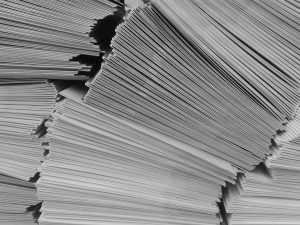
Water Resistance
You need to verify the water resistance of your paper after treatment. Two standardized methods help you do this effectively. The Cobb test (TAPPI T441) measures how much water your paper absorbs. You place a fixed amount of water on the paper under a set weight for a specific time, usually 60 seconds. After removing the water, you weigh the paper to see how much water it absorbed. Lower Cobb values mean better water resistance.
The Dennison Wax Pick test (TAPPI T459) evaluates surface strength. You apply heated waxes of different hardness to the paper. The hardest wax that does not damage the surface shows how well the sizing agent works. Both tests are easy to perform and give you a clear picture of your paper’s water resistance.
💡 Tip: Always use the same test conditions for each batch. Consistent testing helps you track improvements and spot problems early.
Strength
You should also check the mechanical strength of your paper. Wet and dry tensile strength tests show how well your paper holds up during use. Standards like ISO 3781:2011 and ASTM D 829-97 guide these tests. You cut strips of paper and pull them until they break, both in dry and wet conditions. Wet strength retention tells you how much strength remains after the paper gets wet. High wet strength means your sizing and additives work well.
Some labs use wet peeling tests or dynamic mechanical analysis for deeper insights. These methods measure how fibers bond and how the paper behaves under stress. If you see a big drop in wet strength, you may need to adjust your process.
Note: Strong paper resists tearing and breaking, even when exposed to water. Regular strength testing ensures your product meets quality standards.
Adjustments
Test results guide you in fine-tuning your papermaking process. If your Cobb values are too high, try adjusting the sizing agent blend or drying temperature. For example, surface sizing with a mix of starch, APMP effluent, and alum at controlled concentrations can boost water resistance. Dynamic contact angle measurements also help you see how water interacts with your paper surface.
If you want to balance water resistance and strength, consider blending polyethylene (PE) into the pulp. High-branched PE affects strength less than low-branched PE, but low-branched PE gives better water resistance. Blending at least 20% PE often achieves a good balance. Avoid overdosing, as too much PE can lower strength and waste resources.
You can also add polymeric wet-strength agents at the wet end. These agents form cross-linked networks that improve both water resistance and durability. If you need even higher strength, treatments with ionic liquids like choline chloride and glycerol can make fibers more compact and boost tensile strength.
🚩 Callout: Always adjust one variable at a time. Retest after each change to see how it affects water resistance and strength. This approach helps you optimize your process step by step.
Advanced Tips
Specialty Papers
You can achieve superior performance in specialty papers by adopting advanced techniques and technologies. Specialty grades, such as security paper, food packaging, and high-gloss printing stock, demand precise control over sizing and barrier properties. You should consider the following innovations to enhance your results:
- Innovations in reaction engineering and catalyst development help you improve manufacturing efficiency and environmental friendliness.
- Optimization of reaction conditions and the use of novel catalysts allow you to increase yields and reduce unwanted by-products.
- Improvements in process control and automation streamline your production, lower costs, and ensure consistent product quality.
- High-resolution analytical tools enable you to characterize and fine-tune your processes for better water resistance, adhesion, and printability.
By leveraging these advanced methods, you can produce specialty papers that meet strict industry standards and customer expectations.
Additives
You can further boost paper performance by combining sizing agents with functional additives. For example, adding diatomite or nano-clays to your formulation increases barrier properties and enhances print quality. You may also use cationic polymers or modified starches to improve retention and distribution of sizing agents. When you blend these additives, you create a synergistic effect that strengthens the paper and improves its resistance to water and oils.
- Diatomite increases surface area and helps form a tighter barrier.
- Nano-clays improve mechanical strength and reduce permeability.
- Cationic polymers enhance the fixation of sizing agents on fibers.
- Modified starches provide additional strength and support even dispersion.
💡 Tip: Always test new additive combinations in small batches. This approach helps you identify the best mix for your specific paper grade and production setup.
Sustainability
You can make your papermaking process more sustainable by adopting eco-friendly practices and materials. Many mills now use bio-based sizing agents derived from renewable resources like vegetable oils and fatty acids. These alternatives reduce reliance on petrochemicals and lower the environmental footprint of your products. You should also consider greener technologies, such as closed-loop water systems, to minimize water usage and chemical waste.
- Develop bio-based sizing agents from renewable feedstocks to reduce environmental impact.
- Innovate to improve hydrophobicity and adhesion while lowering VOC emissions.
- Comply with environmental regulations by choosing eco-friendly formulations.
- Collaborate with suppliers and customers to create tailored, sustainable solutions.
- Focus on high-performance coatings that meet the demands of sustainable packaging, especially for food and beverage applications.
🌱 Callout: Sustainable practices not only protect the environment but also help you meet growing market demand for greener packaging solutions.
You can achieve stronger, water-resistant paper by following proven steps for selection, preparation, and application. Choose the right materials, control your process, and test results regularly. When you use best practices, you improve efficiency and product quality. Keep refining your approach to stay ahead in papermaking. Continuous improvement ensures your paper meets the highest standards.
FAQ
What is the ideal storage condition for AKD wax emulsion?
Store AKD wax emulsion in a cool, dry place between 5°C and 30°C. Keep the container sealed. Avoid sunlight and freezing. Use the emulsion within its recommended shelf life for best results.
Can you use AKD wax with recycled fibers?
Yes, you can use AKD wax with recycled fibers. Clean the fibers thoroughly before use. Remove contaminants to improve sizing efficiency and water resistance.
How do you know if AKD sizing worked?
Test the paper using the Cobb test or Dennison Wax Pick test. Low Cobb values and high wax pick numbers show good water resistance. Regular testing helps you confirm sizing success.
What happens if you overdose AKD wax?
Overdosing AKD wax can cause deposits, reduce paper quality, and waste chemicals. Start with a low dose. Increase gradually while monitoring paper properties.
Which retention aids work best with AKD wax?
Cationic starch, polyaluminum chloride (PAC), and certain synthetic polymers work well. Test different aids in small batches. Choose the one that gives the best retention and sizing.
Is AKD wax safe for food packaging paper?
Yes, AKD wax is widely used in food packaging. Always select food-grade AKD wax. Check compliance with local food safety regulations before use.
How long does AKD sizing last on paper?
Properly applied AKD sizing can last for years. The hydrophobic bonds formed with cellulose resist water and aging. Store paper in dry conditions to maintain performance.
Can you combine AKD wax with other sizing agents?
You can blend AKD wax with other agents like rosin or synthetic polymers. Test combinations in small batches. Monitor for compatibility and improved performance.


